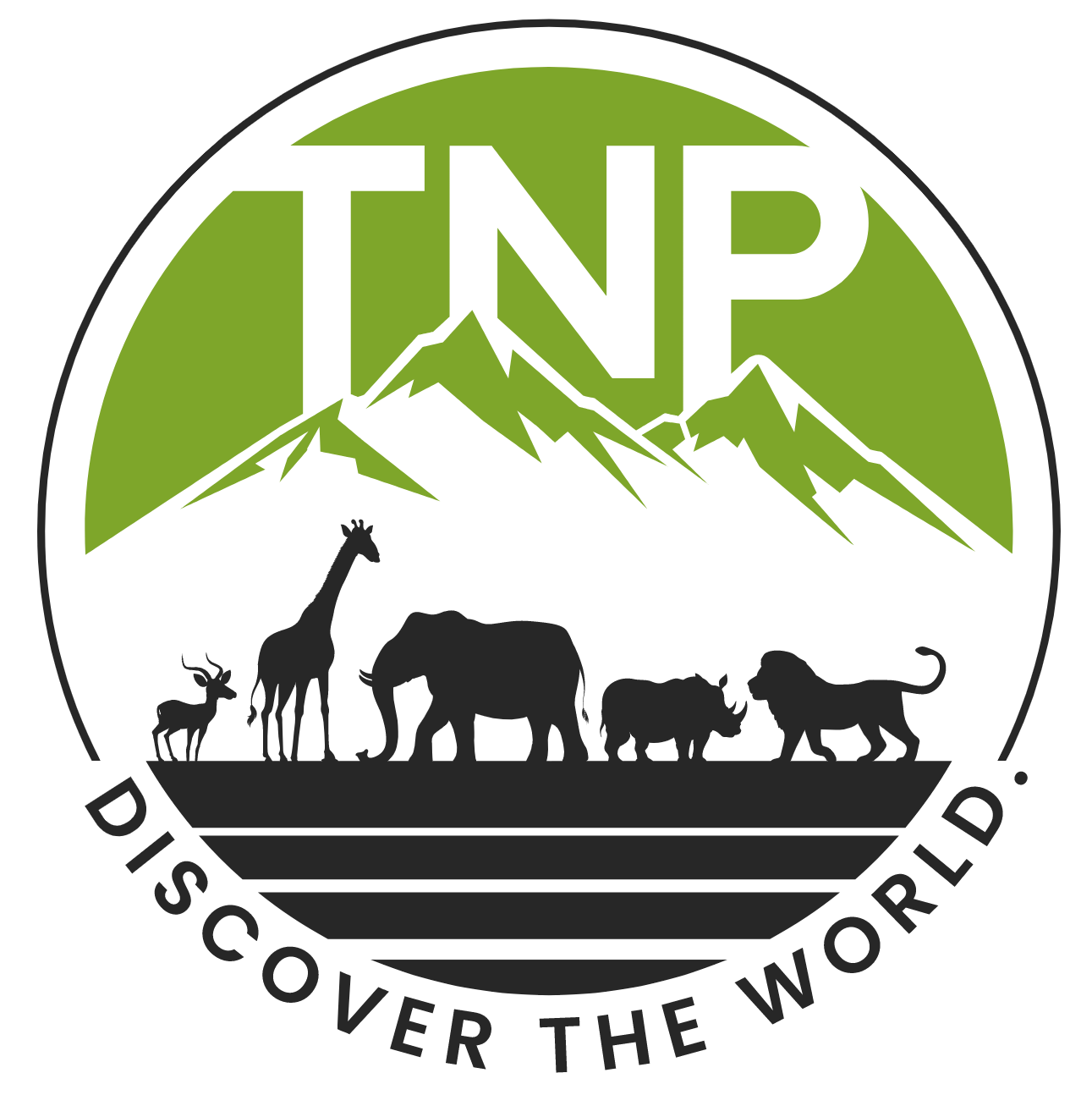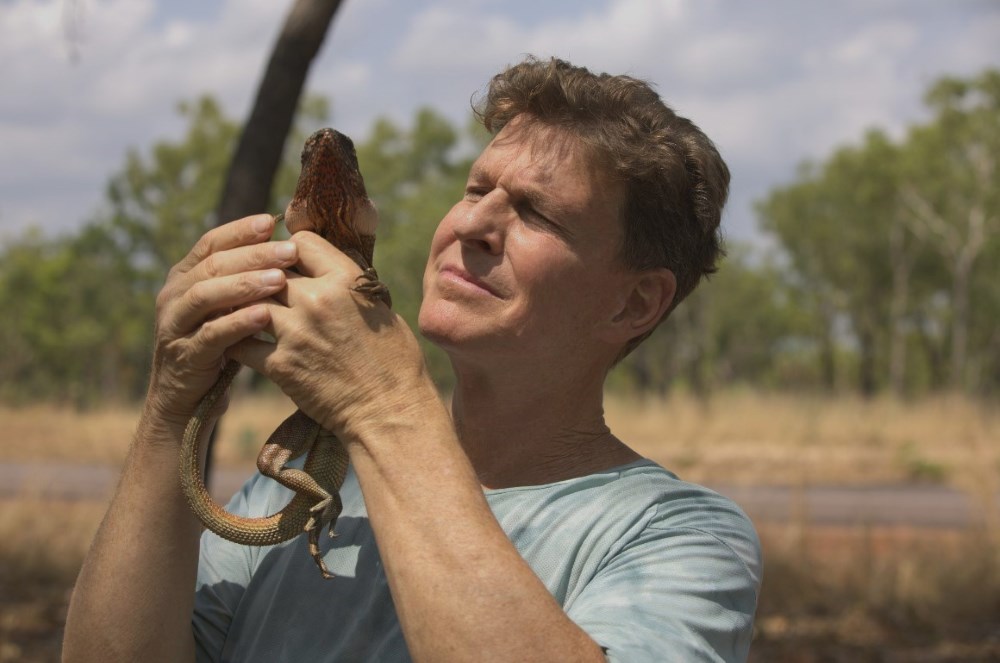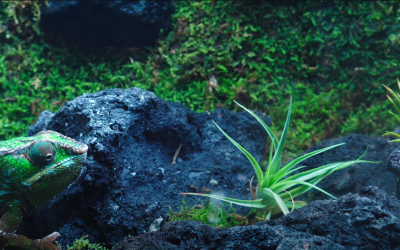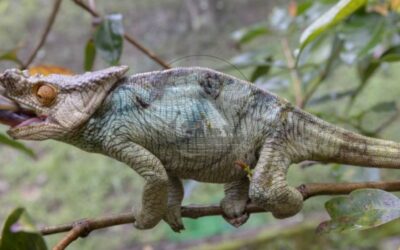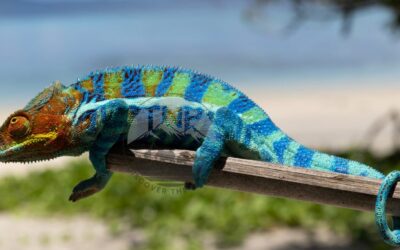I have been to Madagascar five times until 2023. The biodiversity there is fascinating, with lemurs and animal species such as snakes, chameleons, and other lizards. It’s an excellent spot for people who love wildlife, taking photos, and exploring nature in rural areas. It’s a gorgeous country, except for safety issues, deforestation, and turmoils during the presidential election. This island is famous for its unique kinds of natural resources, plants, and animals, offering a great adventure into the African continent.
In this blog, I use my experience as a wildlife photographer to give you a detailed guide to Madagascar. You’ll find essential travel tips, learn a lot about the island’s unique animals like lemurs and chameleons, and learn about the lively culture and friendly people. I’ve put together everything you need for a fantastic trip to Madagascar.
Whether visiting for the first time or returning to see more of its beauty, this blog will help you understand and enjoy Madagascar more. Let’s start this journey together, discovering the beauty and secrets of its land, animals, and people.
11 Madagascar Locations You Should Visit Around Madagascar
Nestled off the southeast coast of Africa, Madagascar is a world apart. Its isolation has fostered a unique biodiversity sanctuary, making it a must-visit for nature lovers and photographers.
Avenue of the Baobabs
This iconic row of ancient baobab trees, framing a dusty road in the Menabe region, offers one of the most photogenic sunsets in the world. These trees, up to 800 years old, are a testament to the island’s ancient ecosystem.
Amber Mountains
The Amber Mountains in Madagascar are a must-visit for nature lovers. This area is known for its lush rainforests, stunning waterfalls, and diverse wildlife, including lemurs and exotic birds. The cool climate and rich biodiversity make it perfect for hiking and exploring.
The park’s unique ecosystem supports a variety of plants and animals, some of which are found nowhere else on Earth. Visitors can enjoy guided tours to learn about the conservation efforts and the importance of preserving this natural wonder.
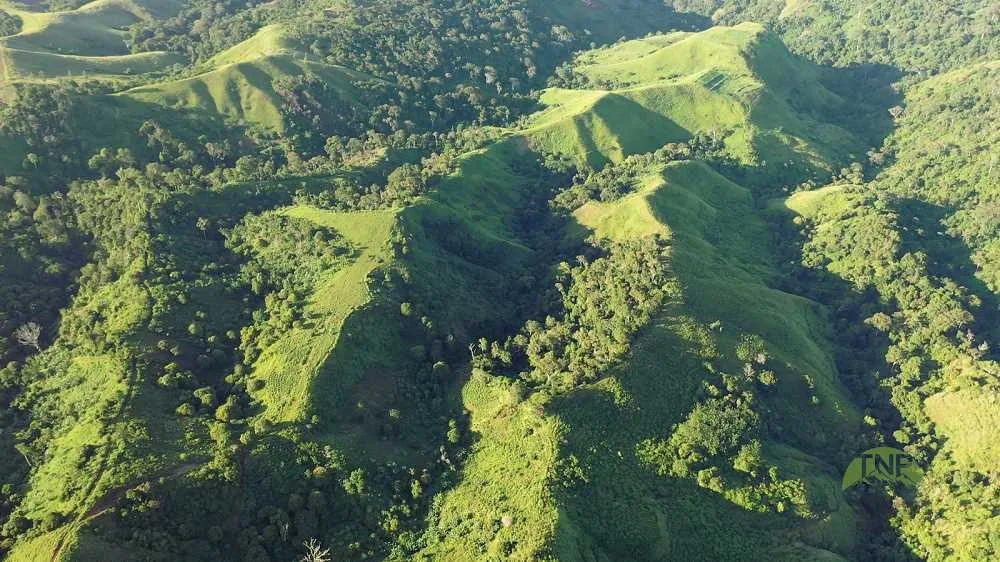
Andilana Beach
Andilana Beach, located on the northwest tip of Nosy Be, Madagascar, is a paradise for beach lovers. Known for its crystal-clear waters and soft, white sands, it’s ideal for swimming, sunbathing, and water sports.
The beach is surrounded by lush vegetation, adding to its secluded and tranquil vibe. Andilana offers stunning sunsets and is close to local restaurants serving fresh seafood. It’s a perfect spot for those looking to relax in a beautiful, natural setting while enjoying the comforts of nearby amenities.

Ankarana National Park
Ankarana National Park, located in northern Madagascar, is famous for its limestone formations, Tsingy, deep canyons, and underground rivers. This rugged landscape is home to various species of lemurs and birds, making it a fantastic destination for wildlife watching.
The unique geological formations, including caves and fossilized coral reefs, provide an adventurous setting for trekking and exploration. Visitors can also learn about the local Malagasy culture and the significance of the park’s natural features to the indigenous people.
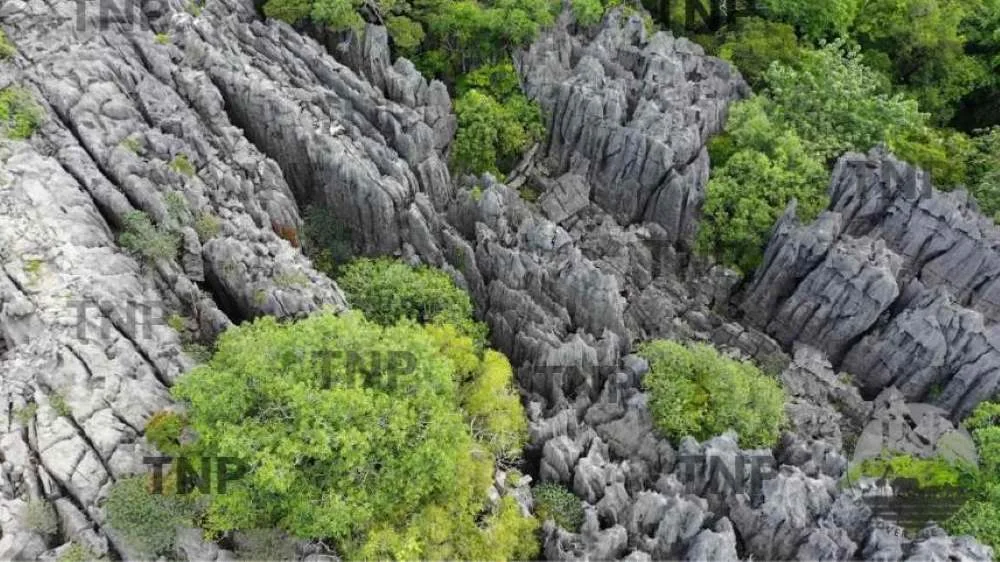
Madagascar Indian Ocean
The Madagascar Indian Ocean coastline is breathtaking, offering pristine beaches, vibrant coral reefs, and rich marine life. It’s a haven for divers and snorkelers, with opportunities to see colorful fish, sea turtles, and even whales during migration season.
The warm, turquoise waters invite relaxation and water sports, while the coastal towns offer insights into Madagascar’s culture and cuisine. This part of the Indian Ocean is also crucial for conservation, with marine parks and reserves protecting its biodiversity.
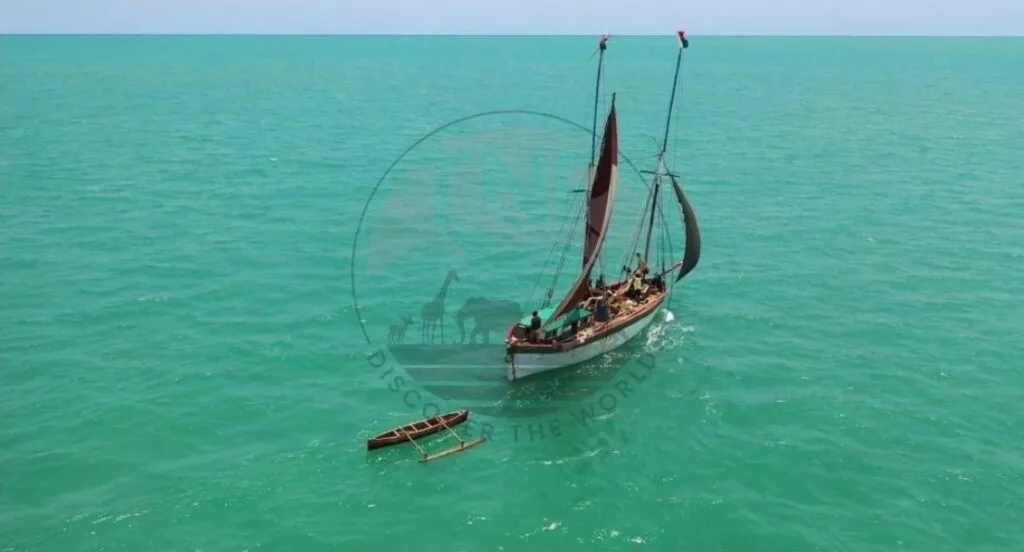
Matka Canyon
While not in Madagascar, Matka Canyon is a stunning natural wonder. Located in North Macedonia, it’s known for its deep river gorges, medieval monasteries, and diverse ecosystems.
The canyon offers kayaking, hiking, and exploring caves, including Vrelo Cave, one of the deepest underwater caves in the world. Its rich biodiversity and historical sites make it a unique destination for adventurers and history enthusiasts.
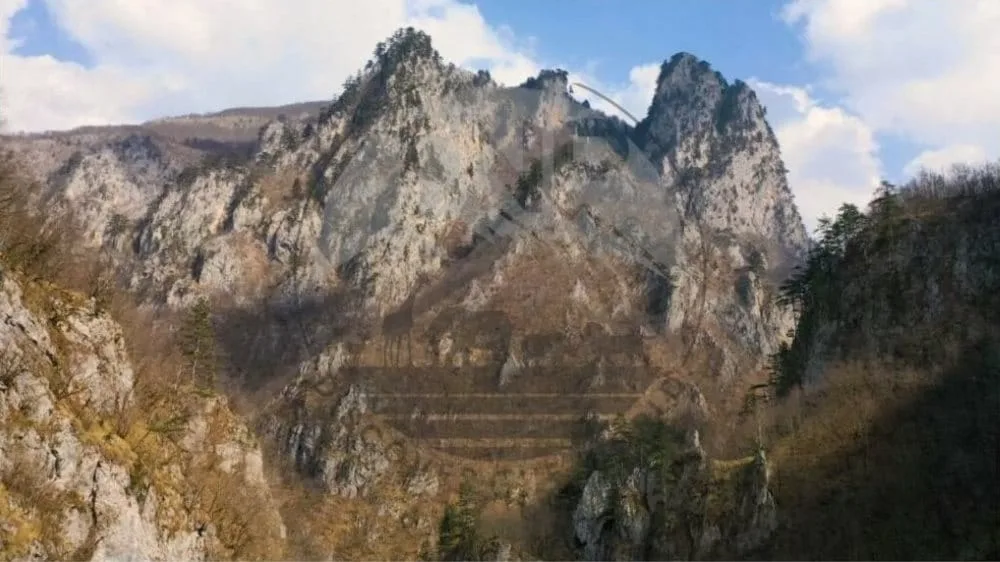
Tsiribihina River
The Tsiribihina River in Madagascar is an adventurer’s dream. This river journey offers a unique way to see the Malagasy countryside, passing through remote villages, dense forests, and savannah landscapes.
Travelers can spot wildlife such as lemurs and crocodiles and witness traditional fishing and farming methods along the banks. The river trip is often done by traditional pirogue or a motorized boat, providing a peaceful and immersive experience in Madagascar’s natural beauty and cultural heritage.
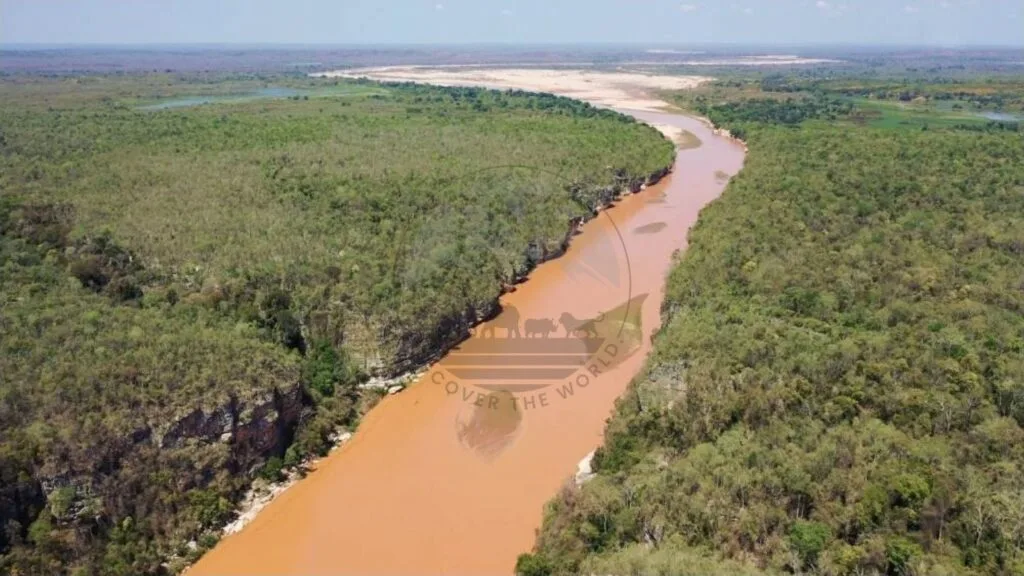
Ranomafana National Park
A biodiversity hotspot, this park is home to the golden bamboo lemur, a species once thought extinct. The misty rainforests and diverse habitats make it a paradise for wildlife photography.
Tsingy de Bemaraha National Park
A UNESCO World Heritage site known for its limestone karst landscapes. The ‘forest’ of limestone needles is a geological wonder and a challenge to navigate, offering thrilling adventure opportunities. Take a look at the breathtaking drone shot I got from there.
Isalo National Park
Renowned for its Jurassic sandstone formations, canyons, and oasis-like pools, Isalo offers a dramatic landscape that contrasts the biodiversity of Madagascar’s rainforests.
Nosy Be
This island off the northwest coast is famous for its pristine beaches, clear waters, and ylang-ylang plantations. It’s a perfect spot for relaxation after exploring the mainland’s rugged terrain.
Want a more in-depth look at the locations of Madagascar? Check out the link.
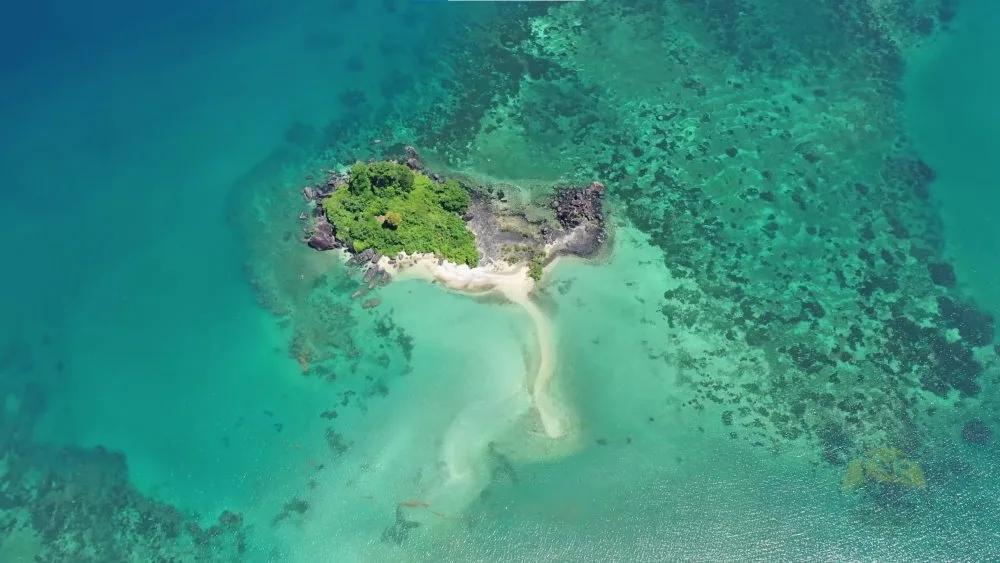
Places to Visit in The Capital of Madagascar
Antananarivo, affectionately known as ‘Tana,’ offers a blend of historical richness and urban dynamism. Here are some must-visit places within the capital:
The Rova (Queen’s Palace): Situated on the highest hill in Antananarivo, this royal complex provides a deep dive into the island’s monarchy and offers stunning city views.
Analakely Market: A vibrant marketplace that’s the heartbeat of Tana, offering everything from fresh produce to handicrafts. It’s a great place to experience the local way of life.
Andafiavaratra Palace: This palace, home to the Prime Minister’s Museum, houses a collection of royal artifacts and offers insights into Madagascar’s colonial history.
Ambohimanga: A UNESCO World Heritage site located just outside the city, this royal hill and its traditional palaces are considered the spiritual home of the Malagasy people.
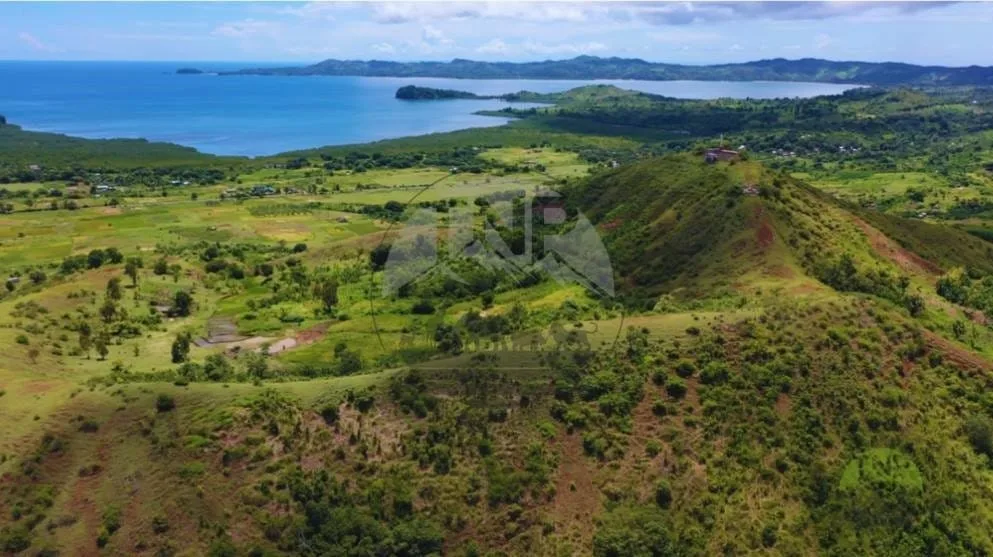
My Initial Experience In Madagascar
Landing in Madagascar, I was immediately struck by the vibrant landscapes and the warmth of the people. The anticipation of discovering the island’s unique biodiversity was palpable. Here are some tips based on my initial experience:
Airport Transfers
Prearrange your transfer to your accommodation to avoid the rush and confusion upon arrival. Many hotels offer this service or can be booked in advance through travel agencies.
Language Tips
While Malagasy is the official language, French is widely spoken due to the country’s colonial history. Knowing basic phrases in either language can greatly enhance your interactions. Here are a few to get started:
- Hello: Salama (Malagasy) / Bonjour (French)
- Thank you: Misaotra (Malagasy) / Merci (French)
- Yes: Eny (Malagasy) / Oui (French)
- No: Tsia (Malagasy) / Non (French)
The Diverse and Unique Madagascar Animals
My journey through Madagascar’s dense forests and arid landscapes has brought me face-to-face with creatures that seem to have sprung from the pages of a fantasy novel. Each photograph I’ve taken tells a story of adaptation and survival, capturing moments as fleeting as they are beautiful.
Lemurs
Madagascar’s most famous inhabitants, lemurs, are as diverse as the island, with over 100 species calling it home. From the tiny mouse lemur, which can fit in the palm of your hand, to the indri, with its hauntingly beautiful song, lemurs embody the spirit of Madagascar.
Capturing a sifaka leaping through the air or the intense gaze of a red-eyed lemur has been among the highlights of my career.

Chameleon
Madagascar is a chameleon’s paradise, hosting two-thirds of the world’s chameleon species. The panther chameleon’s vibrant colors and swiveling eyes makes for a captivating subject.
The ability to witness and photograph these masters of camouflage in their natural habitat has been an extraordinary experience.
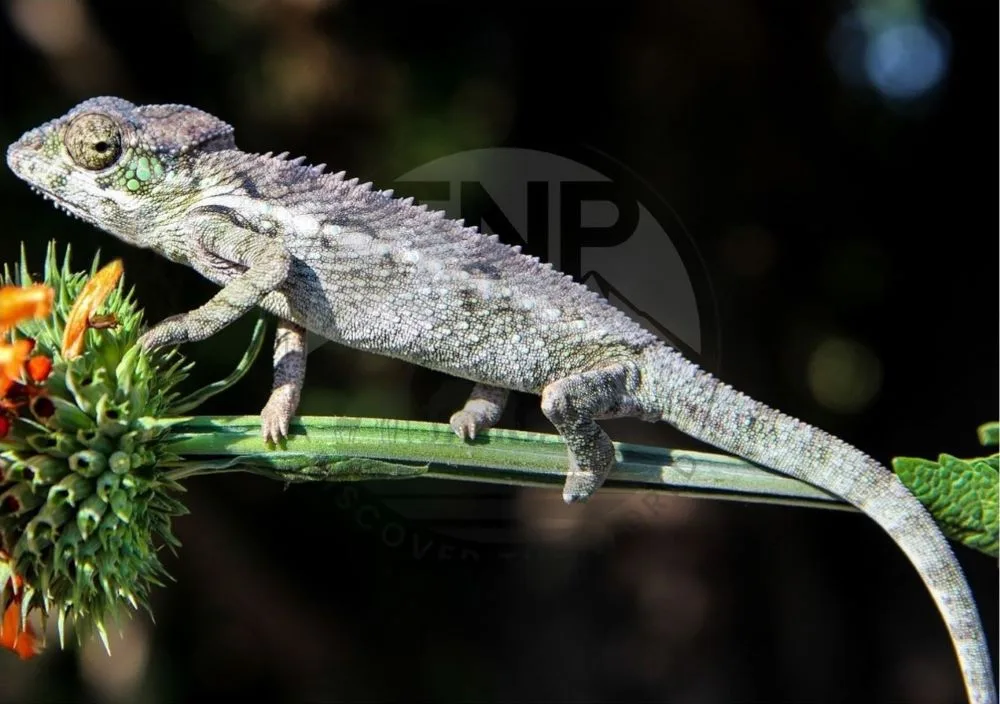
Madagascar Reed Boophis (Heterixalus Alboguttatus)
Madagascar Reed Frogs, known scientifically as Heterixalus Alboguttatus, are small, vibrant amphibians native to Madagascar. Characterized by their striking yellow and black patterns, these frogs primarily inhabit reed beds in wetlands and rice fields.
Active during the day, they feed on a variety of insects. Their distinctive coloration makes them a favorite among photographers and warns predators about their potential toxicity. Breeding occurs in temporary water bodies, where their unique call can be heard during mating season, making them an integral part of Madagascar’s diverse ecosystem.
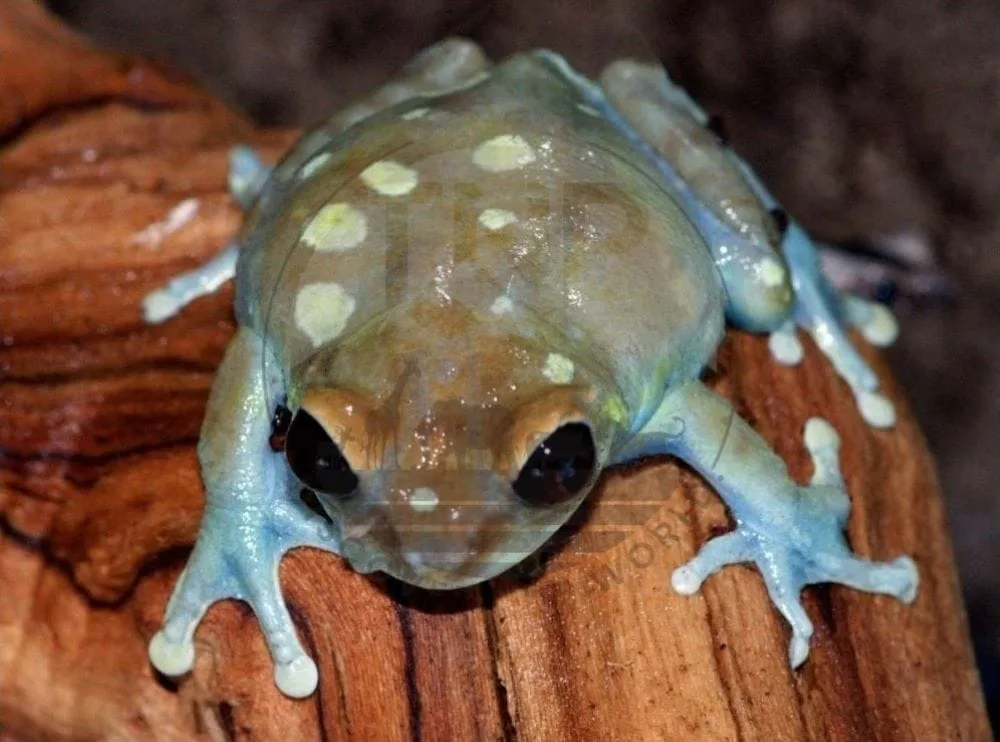
Madagascar Golden Frog (Madagascan Mantella)
The Madagascar Golden Frog, or Madagascan Mantella, is a brightly colored amphibian native to the rainforests of Madagascar. This small frog boasts an eye-catching combination of orange, yellow, and black hues. As a defense mechanism against predators, it mimics the toxic skin of poison dart frogs. It thrives in moist environments, feeding on small insects.
Despite their vibrant appearance, these frogs face threats from habitat loss and the pet trade. Conservation efforts are crucial to ensure the survival of this species, which plays a vital role in the ecological balance by controlling insect populations.
Madagascar Tree Frog
The Madagascar Tree Frog is a versatile amphibian found across various habitats in Madagascar, from forests to human-dominated landscapes. These frogs are known for their adaptability and can often be spotted near water sources. They exhibit a wide range of colors, typically green or brown, which helps them blend into their surroundings to evade predators.
Their nocturnal calls contribute to the island’s nighttime chorus. As insectivores, Madagascar Tree Frogs play a crucial role in controlling pest populations, highlighting their importance in maintaining ecological balance.
Discover the community reserve in Madagascar, a unique sanctuary where both locals and lemurs thrive together in harmony.
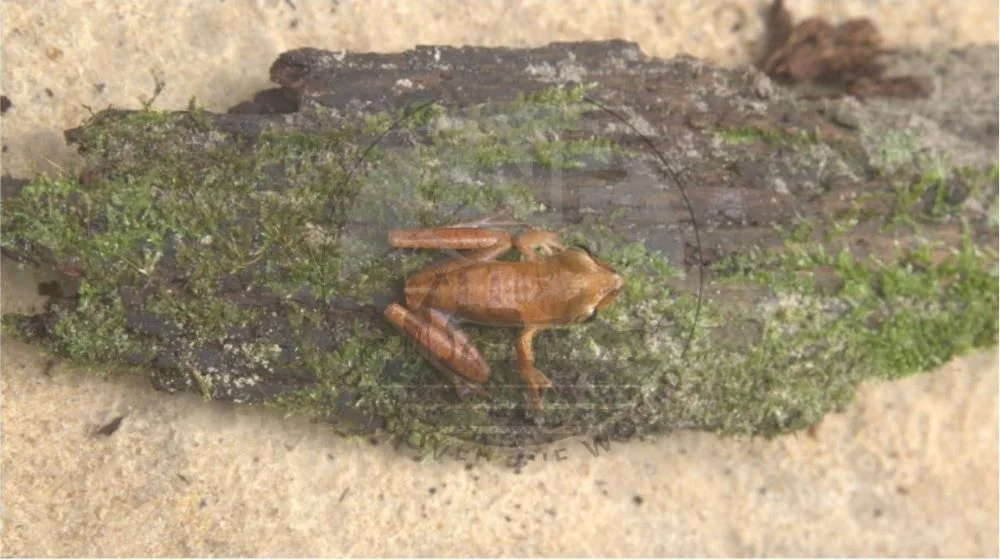
Variegated Golden Frog (Mantella Baroni)
The Variegated Golden Frog, scientifically known as Mantella baroni, is a small, terrestrial frog endemic to Madagascar. It sports a striking black, green, and orange pattern, making it a visually captivating species. These frogs are primarily found in the central highlands of Madagascar, where they inhabit forest edges and agricultural areas.
They feed on small invertebrates and are active during the day. The variegated golden frog’s bright coloration warns predators of its toxicity. Habitat destruction poses a significant threat to their survival, underscoring the need for conservation efforts.
Malagasy Rainbow Frog (Scaphiophryne Gottlebei)
The Malagasy Rainbow Frog, or Scaphiophryne Gottlieb, is a unique and colorful amphibian endemic to the rocky canyons of Madagascar. Known for its striking appearance, this frog has a robust body with vivid patterns ranging from red and orange to green and black. It is well adapted to climbing in its arid habitat, using its strong limbs and suction-cup-like toes.
The Malagasy Rainbow Frog is a burrower, spending much of the dry season underground. It emerges during the rainy season to breed in temporary pools. Due to its limited range and habitat degradation, it is considered at risk, highlighting the importance of habitat protection.
Tomato Frog
The Tomato Frog is an iconic species native to Madagascar. It is named for its bright red to orange skin, which resembles a tomato. This defense mechanism warns predators of their potential toxicity. Tomato Frogs can inflate their bodies to appear larger and release a sticky secretion when threatened.
They are found in the northeastern regions of Madagascar, living in wetlands and marshes. These nocturnal frogs feed on insects and are known for their distinctive mating call. The Tomato Frog’s habitat is threatened by urbanization and pollution, making conservation efforts vital for their continued survival in the wild.
The Fossa
Perhaps the most elusive of Madagascar’s creatures, the fossa is a carnivorous mammal that looks like a cross between a cat, a dog, and a mongoose. Tracking one through the dense forest, camera in hand, tested my patience and skill. They are one of the rarest mammals.
The reward, however, was a series of photographs that captured the essence of Madagascar’s wild heart.
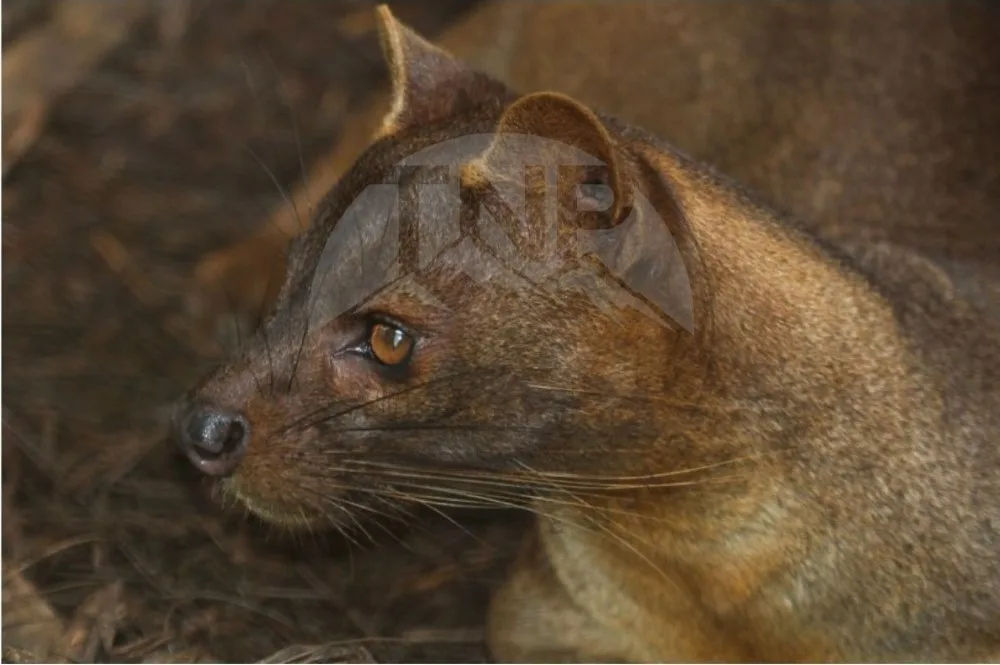
Leaf-Tailed Geckos
Masters of disguise, leaf-tailed geckos blend seamlessly into their surroundings, making them a challenging subject to spot, let alone photograph. Their intricate patterns and textures are a testament to nature’s artistry.
The Aye-Aye
Often considered one of the world’s strangest animals, the aye-aye, whose wiry hair, big eyes, and long middle finger, is a nocturnal lemur that has fascinated me since my first-night walk in Madagascar’s forests. Capturing its unique foraging behavior on camera was a moment of pure joy.
Loving the animals? Check out more Animals of Madagascar in this in-depth article.
The Birds of Madagascar
Madagascar Fish Eagle
The Madagascar Fish Eagle is a large, majestic bird of prey that is critically endangered and found mainly along Madagascar’s northwest coast. Known for its striking white and brown plumage and robust build, it feeds primarily on fish, making coastal and freshwater habitats its home.
Conservation efforts are crucial for this species, which plays a vital role in the ecosystem as a top predator, helping maintain healthy fish populations and balance in its natural habitat.
Check out the blog I wrote about the birds of Madagascar.
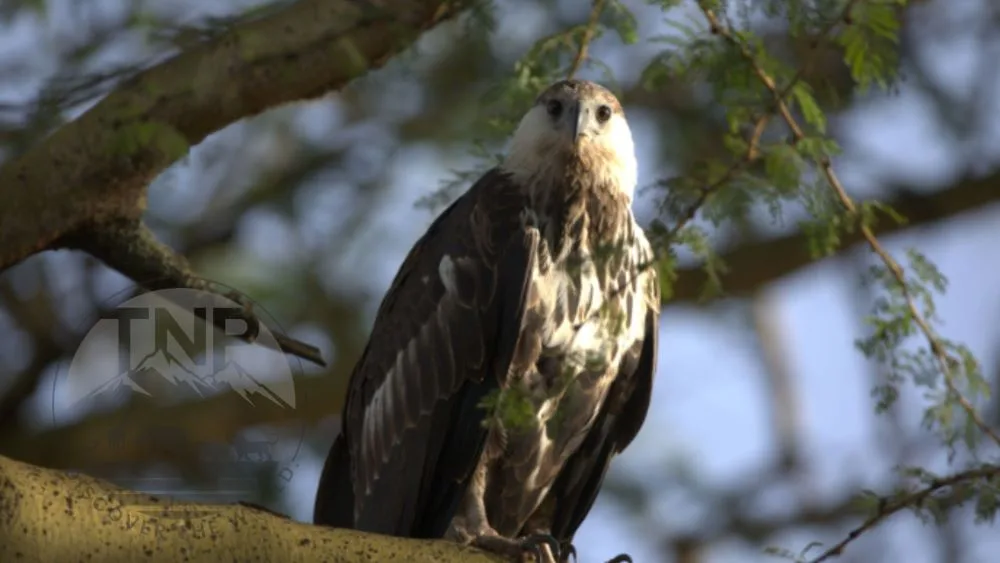
Madagascar Sparrow Hawk
The Madagascar Sparrow Hawk is a small, elusive bird of prey endemic to Madagascar. It thrives in dense forests across the island and hunts small birds and insects, showcasing remarkable agility in flight.
Despite its widespread presence, it remains somewhat of a mystery due to its discreet nature. Efforts to study and conserve its habitat are essential to ensure the survival of this unique species, highlighting the importance of Madagascar’s rich biodiversity.
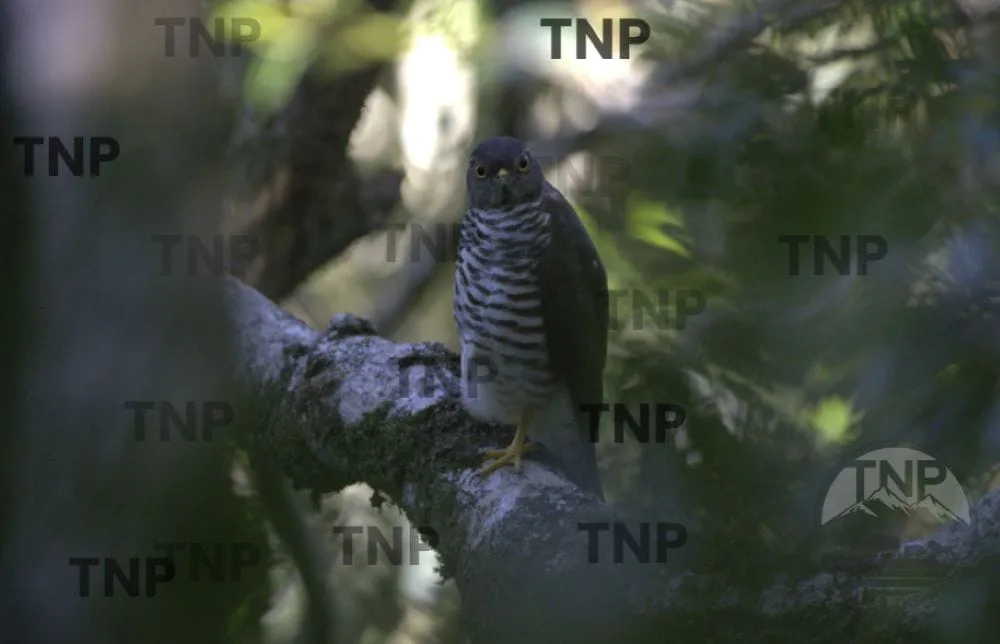
Madagascar Blue Coua
The Madagascar Blue Coua is a strikingly beautiful bird, easily recognized by its vibrant blue feathers and distinctive red eye. This forest dweller is found in the dense rainforests of Madagascar, where it feeds on insects and fruits.
The Blue Coua is known for its curious and bold nature. It often allows close observation, making it a favorite among birdwatchers and a symbol of the island’s unique avian life.

African Spoonbill-Madagascar
The African Spoonbill in Madagascar is a distinctive wading bird, noted for its long, spatula-shaped bill used to sift through shallow waters for fish and insects. Sporting a mainly white plumage with touches of red, it frequents wetlands and lakes across the island.
This bird’s presence underscores the importance of Madagascar’s aquatic ecosystems, serving as indicators of water quality and ecosystem health.

Madagascar Buzzard
The Madagascar Buzzard is a versatile and adaptable bird of prey that inhabits various environments across the island. With its broad wings and robust body, it preys on small mammals, birds, and reptiles.
This buzzard plays a critical role in controlling rodent populations, contributing to the balance of ecosystems. Its adaptability to changing habitats makes it one of Madagascar’s more common raptors, yet it underscores the ongoing need for environmental protection.
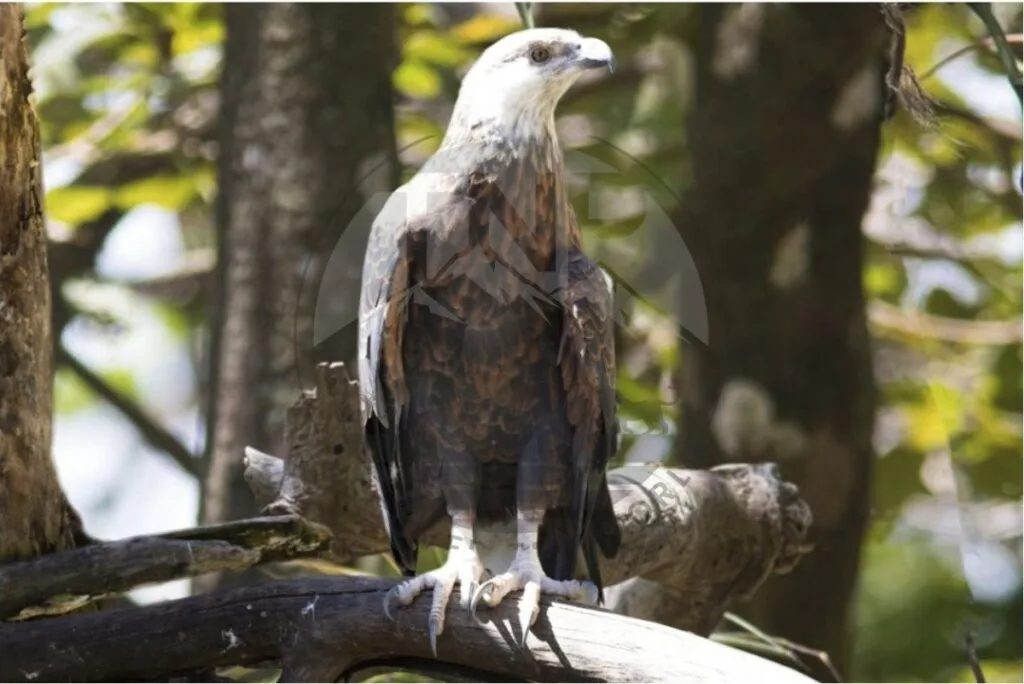
Pink-Backed Pelican-Madagascar
The Pink-Backed Pelican in Madagascar is a remarkable sight, with its large size, distinctive pinkish back, and enormous bill pouch. Found in wetlands and coastal areas, it fishes in groups, showcasing unique cooperative behavior.
This species highlights Madagascar’s rich aquatic life and the significance of conserving wetland habitats to support diverse bird populations and maintain ecological balance.
Madagascar Grey-Headed Lovebird
The Madagascar Grey-Headed Lovebird is a small, charming parrot with a distinctive grey head and vibrant green body. Endemic to Madagascar, it thrives in open woodlands and scrub areas, feeding on seeds and fruits. This lovebird symbolizes the island’s avian diversity, facing threats from habitat loss and the pet trade. Conservation efforts are vital to protect this endearing bird and the unique habitats it calls home.
Madagascar Owl
The Madagascar Owl, also known as the Madagascar Scops Owl, is a nocturnal bird with camouflaged plumage that blends into the forest environment. This elusive owl is found throughout Madagascar, inhabiting dense forests where it hunts insects and small vertebrates.
Its haunting calls add to the mystique of Madagascar’s nights. It plays an essential role in local folklore and ecosystems by controlling insect populations and contributing to the island’s biodiversity. Check out more birds from Madagascar here.
The Indigenous Madagascar Tribes
Madagascar, a land of diverse landscapes and ecosystems, is also home to a mosaic of indigenous tribes with unique traditions, languages, and ways of life. My journey across this magnificent island has allowed me to witness firsthand the rich cultural heritage and the deep connection these tribes have with nature. Here, I share insights into some of the tribes that have fascinated me the most.
Antaifasy
The Antaifasy, meaning “People of the Sand,” reside along Madagascar’s southeastern coast. This tribe is known for its fishing and farming practices, which are deeply intertwined with the coastal environment they inhabit. The Antaifasy have a rich oral tradition, with stories and folklore that reflect their close relationship with the sea and land.
Their culture includes unique burial rites and a strong belief in ancestral spirits, which influence their daily lives and decisions. Visitors to their region can learn about the Antaifasy’s traditional ways of living and efforts to preserve their cultural heritage amidst modern challenges.
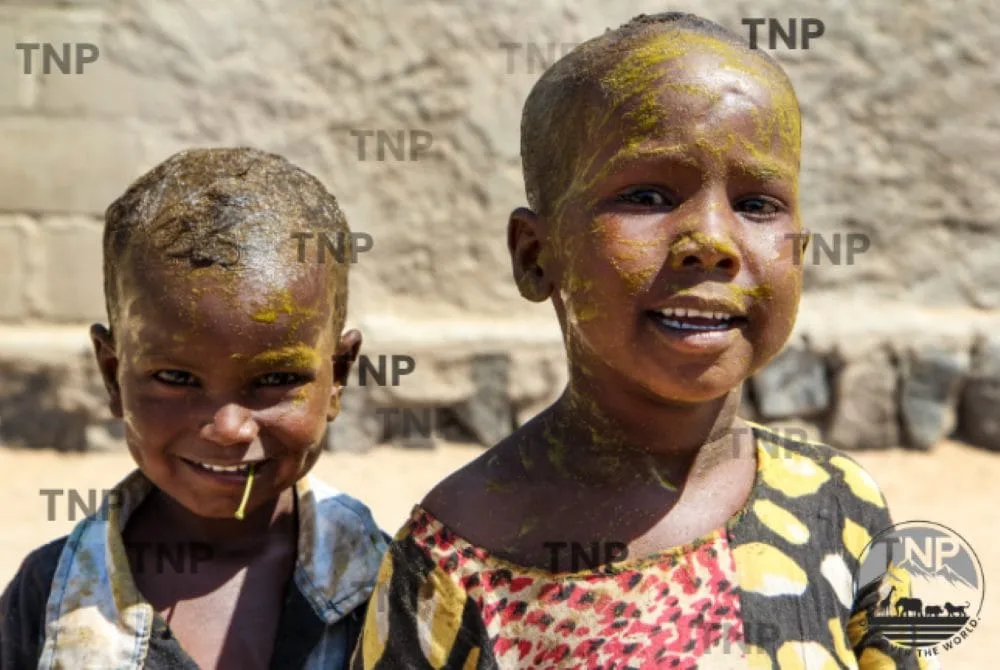
Antanosy
The Antanosy tribe, or “People of the Island,” are located in the southeastern part of Madagascar. They are recognized for their skilled craftsmanship, particularly in woodworking and blacksmithing, which are vital to their economy and cultural expression.
The Antanosy also have a profound connection to their environment, practicing sustainable agriculture and fishing. Their traditions and rituals, including their respect for ancestors and the sacred forests, play a significant role in community life. The Antanosy’s vibrant ceremonies and festivals glimpse their rich cultural landscape and spiritual beliefs.
Antemoro
The Antemoro are an ethnic group in southeastern Madagascar famous for their historical knowledge of astrology and traditional medicine. This tribe has a unique heritage, with origins traced back to Arab settlers, who influenced their script and cultural practices.
The Antemoro are also known for their “sorabe” alphabet, an Arabic-based script used in magic and healing rituals. Their paper-making technique, using the bark of the Avoha tree, is renowned and used for talismans and sacred texts. The Antemoro’s blend of ancestral knowledge and rituals provides insight into a culture that bridges ancient traditions and contemporary life.
Bezanozano
The Bezanozano, meaning “Many Braids,” are a tribe in the central highlands of Madagascar. This tribe is distinguished by its traditional hairstyle, which once included numerous small braids. Living in a region rich in biodiversity, the Bezanozano are primarily agriculturalists, cultivating rice and other crops.
They deeply respect nature, which is reflected in their rituals and practices aimed at protecting the environment. The Bezanozano’s cultural expressions, through music, dance, and oral traditions, offer a window into the soul of Madagascar’s central highland communities.
Sihanaka
The Sihanaka, or “People of the Marshes,” inhabit the central-eastern Madagascar region around Lake Alaotra. Their name reflects their life around water and wetlands, where they excel in rice cultivation and fishing. The Sihanaka have a rich cultural heritage, with unique traditions, music, and dance celebrating their connection to the water and land.
Their society is structured around communal living and cooperation, which is essential for managing the resources of their aquatic environment. The Sihanaka contribute significantly to Madagascar’s cultural diversity, with festivals and rituals that underscore their harmonious relationship with nature.
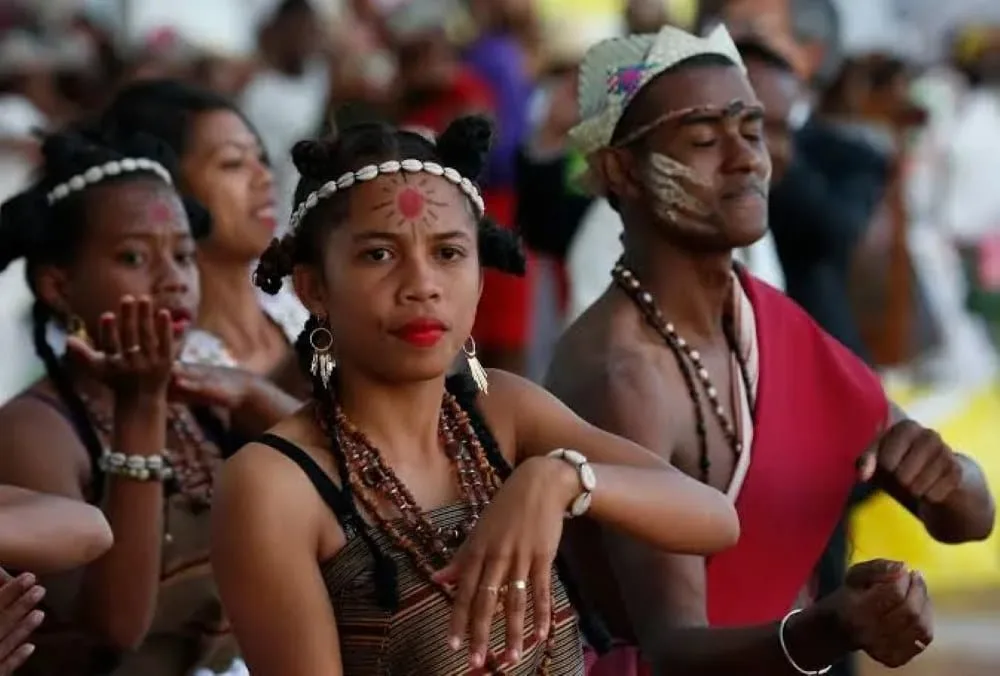
Tanala
The Tanala, meaning “People of the Forest,” live in the southeastern rainforests of Madagascar. Known for their profound knowledge of the forest and its resources, the Tanala are skilled hunters, gatherers, and herbalists. Their intimate understanding of medicinal plants and the ecosystem makes them guardians of the forest.
The Tanala’s traditions and beliefs are deeply rooted in respect for the natural world, evident in their rituals, storytelling, and conservation practices. Their way of life offers valuable insights into sustainable living and preserving Madagascar’s unique biodiversity.
Merina People
Dominating the central highlands around Antananarivo, the Merina are known for their terraced rice paddies and sophisticated irrigation systems. Their historical significance and influence in Madagascar’s political landscape are profound, with a culture rich in oral traditions and ancestor worship.
Betsileo People
Neighbors to the Merina, the Betsileo people are renowned for their agricultural skills, particularly in rice cultivation. Their intricate funerary traditions, including the famous “Famadihana” or turning of the bones ceremony, highlight their deep respect for ancestors.
Betsimisaraka People
Along the East Coast, the Betsimisaraka people, the second-largest ethnic group in Madagascar, are skilled sailors and fishermen. Their communal living and matrilineal society reflect a deep bond with the ocean and rainforests.
Sakalava
In the west and northwest, the Sakalava are known for their elaborate royal tombs and traditional music and dance. Their kingdom once spanned a significant portion of Madagascar, and they remain proud of their historical heritage.
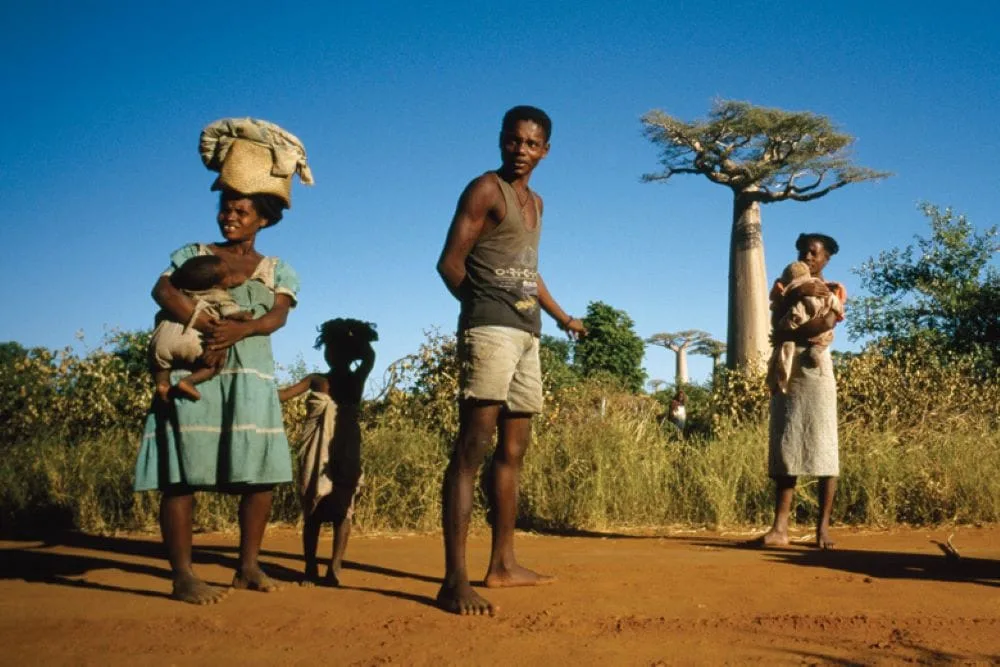
Masikoro, Antandroy, and Mahafaly
These tribes are adept at surviving in harsh environments in the arid south. They are known for their distinctive tombs, with the Mahafaly tombs featuring wooden sculptures and the Antandroy known for their fierce independence.
Vezo People
The Vezo, semi-nomadic fishermen along the southwest coast, have a profound connection with the sea. They live a life dictated by the tides and winds, and their sailing canoes are a testament to their seafaring skills.
Bara People, Antakarana, Tsimihety, and others
Each of these tribes, from the cattle-raising Bara in the south to the Antakarana in the north and the Tsimihety in the northwest, contribute to the rich tapestry of Madagascar’s cultural landscape. Their traditions, from cattle rustling to sacred caves and annual festivals, offer a glimpse into the diverse ways of life that have evolved on this island.
Know more about the people of Madagascar here!
Modern-Day Madagascar Culture
Madagascar’s culture today is a vibrant blend of its indigenous heritage and the influences of its Asian, African, and European settlers. This fusion is evident in the island’s music, dance, cuisine, and festivals.
Music and Dance
Traditional music often features the valiha, a bamboo tube zither considered the national instrument of Madagascar. Music styles vary by region, with influences ranging from Southeast Asian to Arabic and African. Dance is an integral part of Malagasy culture, with each tribe showcasing its unique steps and rhythms during celebrations and ceremonies.
Cuisine
Malagasy cuisine reflects the island’s diverse cultures and available local ingredients. Rice is a staple, often served with meat and vegetables from zebu (a type of cattle). Seafood is predominant along the coast. Unique dishes like “Romazava” (a meat and greens stew) and “mofo gasy” (a type of Malagasy bread) are must-tries for any visitor.
Festivals
Madagascar hosts numerous festivals yearly, celebrating everything from the New Year (Alahamadi Be) to the whale season. The “Donia” music festival in Nosy Be and the “Famadihana” turning of the bones ceremony are among the most vibrant expressions of the island’s cultural richness.
Madagascar Cousine Journey
From the staple rice dishes to the exotic fruits that adorn the local markets, Madagascar’s food scene is a testament to its history, geography, and people’s ingenuity.
Introduction to Malagasy Cuisine
Madagascar’s cuisine is a flavorful fusion of influences from Southeast Asia, Africa, India, and Europe, reflecting the island’s history of migration and trade. Rice, the cornerstone of every meal, is often accompanied by various meats, vegetables, and legumes, cooked with a blend of spices that add depth and warmth to the dishes.
Rice (Vary)
Served with almost every meal, rice is more than just a staple; it’s a cultural symbol of life and prosperity.
Zebu (Omby)
Zebu meat is a type of cattle indigenous to the island. It is used in various dishes, from stews to grilled skewers.

Seafood
Given its extensive coastline, Madagascar boasts a bounty of seafood, including fish, shrimp, and crab, often prepared with aromatic spices.
Vanilla and Spices
Madagascar is the world’s largest vanilla producer, which flavors sweet and savory dishes. Other spices, such as turmeric, ginger, and cloves, play a significant role in the cuisine.
Must-Try Dishes in Madagascar
Romazava
A hearty stew made with zebu meat and mixed greens embodies Malagasy comfort food’s essence.
Mofo Gasy
Malagasy bread, often enjoyed for breakfast, is made from rice flour and coconut milk and cooked in circular molds.
Ravitoto
A dish of pounded cassava leaves cooked with coconut milk and pieces of pork or beef, offering a creamy texture and rich flavor.
Voanjobory sy Henakisoa
A festive dish combining bambara groundnuts with pork, showcasing the island’s legumes and love for pork.
Vary Amin’anana
Rice cooked with green leafy vegetables and meat is a simple yet nutritious meal that reflects the everyday diet of the Malagasy people.
Sweet Treats and Beverages
Koba
A traditional sweet made from banana, peanuts, and rice flour, wrapped in banana leaves and steamed, offering a glimpse into the island’s snack culture.
Ranovola
Burnt rice tea, a unique beverage made by boiling the crust of cooked rice with water, is a testament to Malagasy cuisine’s resourcefulness.
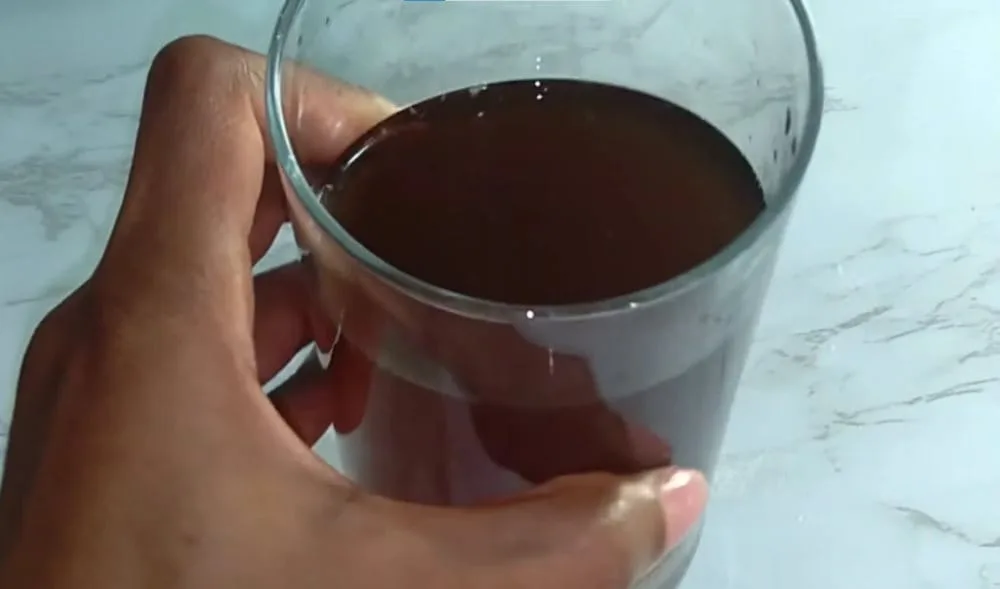
Navigate Your Way to Madagascar: A Travel Guide
Traveling to Madagascar, an island renowned for its unique biodiversity and vibrant cultures, requires thoughtful planning and preparation. Drawing insights from various authoritative sources, this section will equip you with essential information and tips to ensure a smooth journey to this extraordinary destination.
Preparing for Your Trip
Visas and Documentation
Most travelers will need a visa to enter Madagascar. Visas can be obtained upon arrival at the airport for stays up to 30 days, but it’s advisable to check the latest requirements before your trip as policies may change.
Ensure your passport has at least six months of validity from your planned return date.
Health Precautions
Vaccinations for hepatitis A, typhoid, and tetanus are recommended for all travelers. Depending on your itinerary, vaccines for hepatitis B, rabies, and yellow fever may also be advised. Anti-malarial medication is recommended due to the presence of malaria throughout the island.
Travel Insurance
Comprehensive travel insurance that covers medical evacuation is crucial due to the limited medical facilities in remote areas of Madagascar.
Getting There By Air
Ivato International Airport in Antananarivo is the main gateway to Madagascar. Direct flights are available from major cities in Africa and Europe. To secure the best rates, it is recommended that you check flight availability and book in advance.
Check this blog as a travel guide for Madagascar.
Upon Arrival
The Malagasy Ariary (MGA) is the local currency. Cash is king in many parts of Madagascar, and there is limited access to ATMs outside Antananarivo and significant towns. Carrying small denominations for everyday purchases is advisable.
Transportation
Renting a car with a driver is a popular option for getting around, offering flexibility and the opportunity to explore off the beaten path. Domestic flights serve significant regions, while bush taxis (Taxi-Brousse) provide an affordable, albeit less comfortable, way to travel between towns.
Safety Tips
While Madagascar is generally safe for travelers, it’s wise to take standard precautions. Avoid walking alone at night, secure your belongings, and stay informed about local conditions, especially when traveling to remote areas.
The Malagasy weather can be tricky at times.
Essential Gear for Your Madagascar Adventure
Packing smart for Madagascar means being prepared for its varied environments and activities. With the right gear, you’ll be ready to explore everything from its bustling markets to its secluded beaches and dense forests, ensuring a memorable and hassle-free adventure.
Here’s a comprehensive list of travel essentials tailored to Madagascar’s diverse landscapes, from lush rainforests to arid deserts.
Clothing
Lightweight, Breathable Layers: Madagascar’s climate varies, so pack clothes you can layer. Include long-sleeved shirts and pants to protect against mosquitoes and the sun.
Rain Gear: A lightweight, waterproof jacket is a must, especially if you visit rainforests or travel during the rainy season.
Sturdy Footwear: Bring waterproof hiking boots for treks and comfortable walking shoes for exploring towns.
Health and Safety
Insect Repellent: Essential for warding off mosquitoes that can carry diseases. Choose one with DEET or picaridin.
Sun Protection: A high-SPF sunscreen, sunglasses, and a wide-brimmed hat will protect you from the intense sun.
First Aid Kit: Pack a basic kit with bandages, antiseptics, and personal medications. Include water purification tablets or a water filter bottle.
Gear and Gadgets
Durable Backpack: A comfortable, durable backpack is vital for day trips and hiking excursions.
Power Adapter and Power Bank: Madagascar uses Type C and E outlets. A power bank ensures your devices stay charged on long travel days.
Waterproof Bags: Protect your electronics and important documents in waterproof bags or cases.
Miscellaneous
Binoculars: Enhance your wildlife viewing experiences with a good pair of binoculars.
Headlamp or Flashlight: Useful for nighttime walks and power outages, standard in remote areas.
Reusable Water Bottle: Stay hydrated and reduce plastic waste by carrying a reusable water bottle.
Gears I Used To Take Photographs In Madagascar

Canon EOS R5 Body
Notable Specs: 45MP full-frame CMOS sensor, up to 20 fps shooting, 8K video recording, 5-axis image stabilization.
Why It’s Good for Wildlife Photography
The Canon EOS R5’s high resolution allows for detailed wildlife images, while its fast shooting speed is perfect for capturing quick movements. The 8K video capability is excellent for wildlife videography, and the image stabilization helps reduce camera shake during handheld shooting in the diverse terrains of Madagascar.
Canon EF 24-70mm f/2.8L II USM Lens
Notable Specs: f/2.8 constant maximum aperture, weather-sealed construction, ultrasonic autofocus motor.
Why It’s Good for Wildlife Photography
This lens offers a versatile zoom range ideal for various scenes, from vast landscapes to closer shots of animals. The fast aperture allows for shooting in low-light conditions, such as dense forests, and the quick autofocus ensures you never miss a moment.
Canon EF 70-200mm f/2.8L USM Lens

Notable Specs: f/2.8 constant aperture, ultrasonic motor (USM) for fast autofocus, internal zoom, and focus.
Why It’s Good for Wildlife Photography
The zoom range is perfect for capturing distant wildlife without disturbing them. The fast aperture helps create a beautiful background blur to make subjects stand out. Its fast autofocus is crucial for capturing animals in motion, making it a staple for wildlife photographers in Madagascar.
Canon EF 200-400mm f/4L IS USM Extender 1.4x

Notable Specs: Built-in 1.4x extender, Image Stabilization, weather-sealed design, f/4 constant aperture.
Why It’s Good for Wildlife Photography
This lens’s built-in extender allows photographers to quickly switch to a longer focal length, which is essential for unpredictable wildlife scenes. The image stabilization is key for shooting at such long focal lengths, especially in low light. Its robust build and weather sealing are perfect for Madagascar’s varied climates, ensuring reliable performance in any condition.
What Is The Best Time To Travel To Madagascar?
Madagascar’s climate varies significantly across the island, affecting the best times to visit different regions. However, the dry season, spanning from April to October, is generally considered the ideal period for most activities, including wildlife viewing and hiking. Below is a breakdown of the seasons and what you can expect:
| Season | Months | Description |
| Dry Season | April to October | Cooler temperatures and less rainfall make this the best time for outdoor activities. Wildlife is easier to spot as animals congregate around water sources. |
| Wet Season | November to March | Hotter, rainier months, can make travel difficult due to poor road conditions. However, it’s the best time for bird watching and seeing lush landscapes. |
International flights usually arrive in Antananarivo, the capital. You can explore further through domestic flights, rental cars, or organized tours to reach more remote attractions.
When are you leaving for Madagascar?
As we wrap up this journey through Madagascar, I’m reminded of the incredible diversity and beauty that this island has offered me. From the majestic Avenue of the Baobabs to the lively markets of Antananarivo, Madagascar has been a photographer’s dream and an adventurer’s paradise. Each encounter, whether with the unique wildlife or the welcoming people, has deepened my appreciation for this extraordinary place.
Writing this Madagascar travel guide has made me realize I want to revisit the place in 2024. My daughter Lindsey loves it as well. I guess we’ll both go again to Madagascar!
Traveling to Madagascar FAQs
Is it safe to travel to Madagascar right now?
Travel safety can vary, so checking current travel advisories from reputable sources is essential before planning your trip. Generally, Madagascar is considered safe for tourists, but like any destination, it’s wise to take standard safety precautions, especially in urban areas.
Is it worth it to go to Madagascar?
Absolutely! Madagascar offers unique wildlife, diverse landscapes, and rich cultures not found anywhere else. From exploring rainforests to relaxing on pristine beaches, it’s a destination that caters to adventurers, nature lovers, and culture enthusiasts alike.
Is traveling to Madagascar cheap?
Travel costs in Madagascar can vary widely depending on your style of travel. While it’s possible to explore Madagascar on a budget, especially by using local transport and staying in budget accommodations, some costs, like internal flights and guided tours, can be relatively high due to the island’s size and infrastructure.
Is Madagascar safe for solo female travelers?
Many solo female travelers have safely explored Madagascar. However, it’s essential to exercise caution, stay aware of your surroundings, and follow local advice, especially when traveling alone. Choosing reputable accommodations and transportation can also enhance safety.
Why do tourists go to Madagascar?
Tourists are drawn to Madagascar for its incredible biodiversity, including unique species like lemurs, its stunning natural landscapes ranging from rainforests to deserts, and its welcoming culture. Madagascar’s isolation has preserved many unique ecosystems and traditions, making it a fascinating destination for eco-tourism and cultural exploration.
Do I need a visa for Madagascar and Antananarivo?
Most travelers will need a visa to enter Madagascar, which can be obtained upon arrival for up to 30 days. However, requirements can change, so checking the latest visa information from official sources before your trip is best.
Why is Madagascar not a tourist destination?
Madagascar is a tourist destination, but its tourism industry is less developed than other locations. This is partly due to its remote location, limited infrastructure, and the need for sustainable tourism practices to protect its unique environment. However, for many, this untouched aspect adds to its appeal.
When not to go to Madagascar?
The rainy season, from January to March, can be challenging for travel due to heavy rains and cyclones, especially in the north and east. This period can make some roads impassable and increase the risk of malaria. Planning your visit outside these months is generally advisable.
Is 7 days enough in Madagascar?
While 7 days are enough to get a taste of Madagascar, its diverse environments and attractions mean that longer trips can provide a more in-depth experience. With limited time, focusing on one or two regions is recommended to minimize travel time and maximize your experience.
Is Madagascar A safe animal habitat?
Madagascar is renowned for its unique biodiversity, with many species found nowhere else on Earth. While parts of Madagascar are protected and relatively safe for wildlife, threats like habitat destruction, climate change, and illegal logging endanger many species. Efforts are being made to safeguard habitats, but ongoing conservation is vital to ensure the safety of Madagascar’s diverse animal populations.
